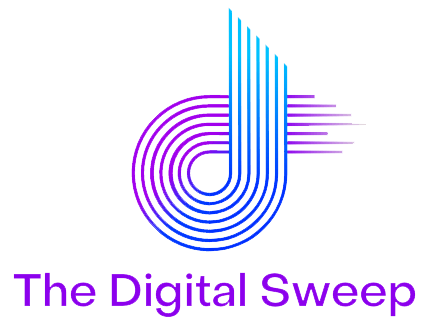Inclusivity is the key to unlocking mass crypto adoption. Decentralized finance (DeFi) is no exception. That’s why more and more blockchain companies are offering solutions that nudge DeFi toward a future with more participants.
Here, we present three of the top DeFi trends that are paving the way in this area and are worth watching for years to come. They provide loans to the world’s underbanked and unbanked populations, as well as exposure to a diverse set of asset classes and simplified collective investments.
#1 Credit Ratings: access crypto loans with higher lending rates and no collateral
Some of the most common applications in DeFi are lending protocols. In a typical DeFi loan scenario, the borrower deposits crypto assets as collateral and pays interest to the lenders. In many cases, the collateral value exceeds the loan value; for example, you put up 75ETH in collateral for a 50ETH loan. This is referred to as over-collateralization.
Over-collateralization is a credit enhancement technique, and its primary purpose is to reduce the credit risk faced by the lender. DeFi lending platforms ask for it mainly because of the anonymity of the crypto users.
A new wave of DeFi protocols addresses the over-collateralization issue using credit ratings. They evaluate a borrower’s creditworthiness the same way a traditional financial institution such as TransUnion would, but without the need for an intermediary. As a result, they open the door to low or collateral-free loans for many underbanked and unbanked users worldwide.
Take, for example, CreDA (Credit Data Alliance). The platform calculates your crypto credit score using the data on your wallets and transaction history. You can mint this score to a non-fungible token called cNFT. Based on your cNFT score, you can benefit from exclusive lending rates and lower collateral values. To offer these additional incentives to its users, CreDA partnered with the DeFi lending platform FilDA.
RociFi, another leading actor among decentralized credit score providers, raised $2.7M in a seed round in April 2022. The protocol works with decentralized identity providers to incorporate data from Twitter and GitHub accounts and calculates a non-fungible credit score ranging from 1 to 10. The users who have 1-6 credit stores can gain access to under-collateralized lending.

Other DeFi protocols that offer under-collateralized or no collateral loans based on credit scores include spectral.finance, masa.finance, and cred protocol.
#2 Synthetic Assets: exposure to a broader range of assets
Synthetic assets take the concept of derivatives from the traditional financial markets and apply it to crypto trading.
A derivative is a contract whose value is based upon an underlying asset. It represents an asset the trader doesn’t own but wishes to sell or buy. A synthetic asset is a tokenized version of it.
To better understand the concept, let’s take one of the pioneers in this area: Synthetix. The protocol provides its traders with exposure to a variety of assets, including stocks and commodities. For this purpose, Synthetix uses a unique collateral model, and users can trade tokens that track the price movements of these assets without leaving the platform’s ecosystem. Sythetix’s portfolio is weighted toward crypto derivatives.
Morpher platform works in a similar way, but it has more stock trading alternatives. Users can begin trading with low amounts thanks to fractional shares and invest in companies like Tesla and Shopify. Another company in this domain is Hegic; it provides option trading with free gas fees. Opyn is also building a platform for derivatives and options in DeFi.
In terms of synthetic assets protocols, UMA is also worth mentioning. Any two parties can use this protocol to create financial contracts on their terms, including derivative contracts for real-world assets. Another notable derivatives-related company is DerivaDex which is a community-governed derivatives exchange.
#3 Investment DAOs: invest in DeFi startups as collectives
It’s no secret that decentralized autonomous organizations (DAOs) are one of the hot tickets in the crypto circles. According to an analysis by Snapshot, the number of DAOs increased by 8.8 times between May 2021 and June 2022, from 700 to 6000.
One class of DAOs is particularly on the rise: investment DAOs. They operate similarly to venture capital funds but with some differences. In essence, they take advantage of the benefits that web3 provides. They’re not entirely governed by a few powerful people; the community can influence investment decisions by voting on proposals run by smart contracts. Additionally, investors are able to invest in small amounts thanks to the inclusive nature of DAOs.
Investment DAOs contribute to DeFi by funding crypto startups across the world. Syndicate is among the top investment DAOs. It is backed by 50+ major investors, with Andreessen Horowitz leading the way. Through Syndicate’s technology, any group of people can form a web3 investment club to invest together.
This accessibility aspect is at the heart of all investment DAOs. Another noteworthy initiative in this space is BitDAO, a collective that has already allocated $638M in the sector. It is supported by well-known investors like Peter Thiel and Alan Howard. Recently, the well-known Israeli Venture Capital Pitango launched its own DAO, First DAO, also with the intention of investing in crypto startups, including DeFi.
Conclusion
DeFi is still a nascent industry that must develop many innovative solutions to offer services to a diverse audience.
Getting everything right in one go is not possible. Nonetheless, the blockchain companies that capitalize on these trends contribute significantly to a DeFi ecosystem in which more of us will have a say and access to lucrative financial instruments.













0 Comments